Here’s an easy forces science lesson plan. Children can make a simple spinning top and use it for a forces experiment to see the effect of forces, gravity, and friction.
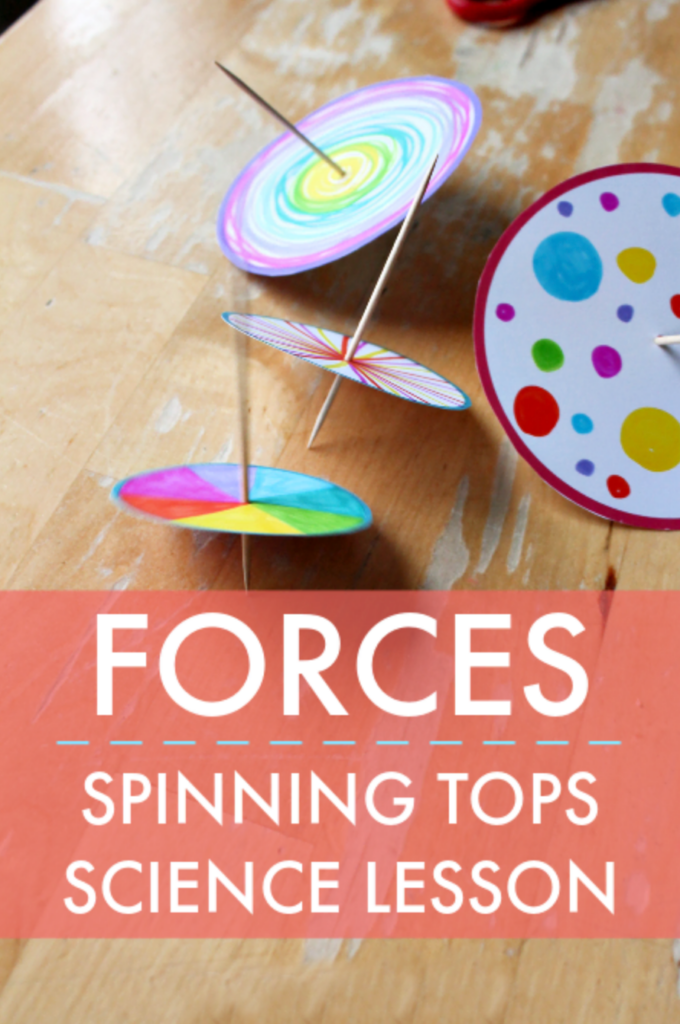
Save time with our ready-made science curriculum
The easiest way for you to teach your children is by using the ready-made units in NurtureStore’s Play Academy.
Each unit gives you one activity per day that all your children can do together.
Every thing is in one place, clearly laid out and ad-free. Plus, you get bonus printables to make your teaching even easier – including the spinning tops printable for this experiment.
You can choose from over 50 ready-made units including our science curriculum pathway which includes units on Space, Dinosaurs, Leaves & Twigs, Forest School, Sunflowers, Bees, Cats, Weather, Candy Science, Daffodils and Ice & Snow.
See more and choose your first ready-made teaching unit here.
Easy forces science lesson plan with spinning tops printable
In this simple science lesson we will use spinning tops to explore forces, friction and gravity, though play!
Using the spinning tops printable, children can:
:: follow a set of simple instruction to use the printable to make spinning tops
:: combine science and art in a STEAM lesson
:: devise a science experiment to explore spinning tops
:: test out different spinning top designs
:: observe and compare results
:: make hypotheses and test them out
:: learn about forces, friction, and gravity
Hanukkah and fine motor skills
This is a fun science experiment to explore around the festival of Hanukkah, which traditionally is associated with spinning tops and the game of dreidel.
The printable spinning tops also make an excellent finger gym as the movements involved in the making and spinning of the tops develop fine motor skills.
Materials needed
:: spinning top printable (Join our Play Academy and you can get this from our extensive Printables Library as part of your membership.)
:: coloured pens and pencils
:: scissors
:: toothpicks
:: small piece sticky tack or playdough
:: stopwatch (optional)
:: paper and pencils to record experiment and observations (optional)
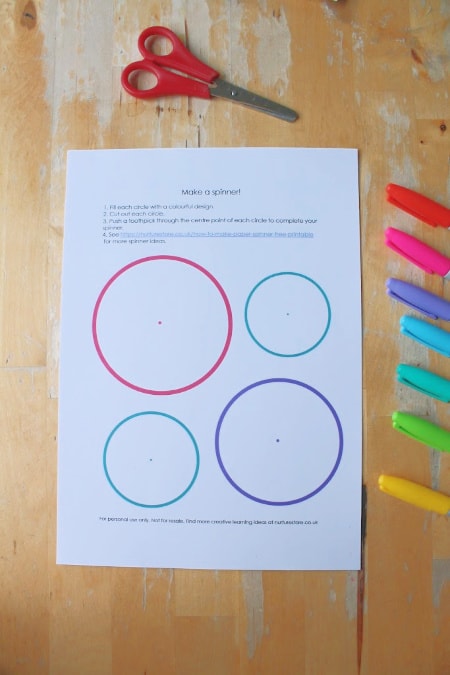
How to make the spinning tops
Begin by printing the spinning tops sheet. (Join our Play Academy and you can get this from our extensive Printables Library as part of your membership.)
Print on card for extra durability.
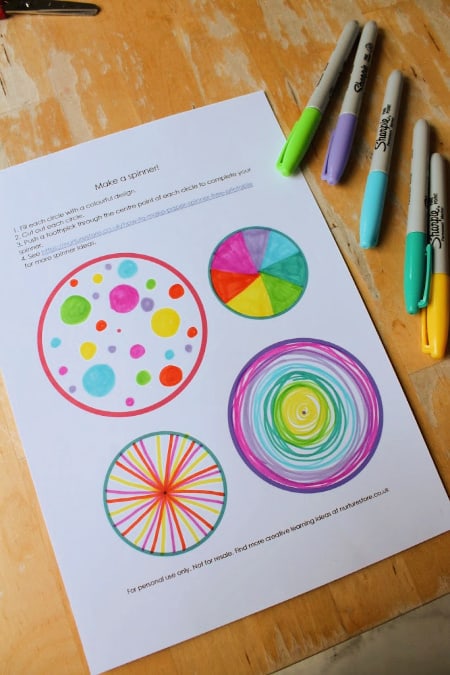
Use coloured markers or pencils to add designs to each spinning top.
Try to think of a different design for each spinning top. You might use stripes, zigzags, dots, concentric patterns or blocks of colour.
How do you think each different design will appear once the top is spinning?
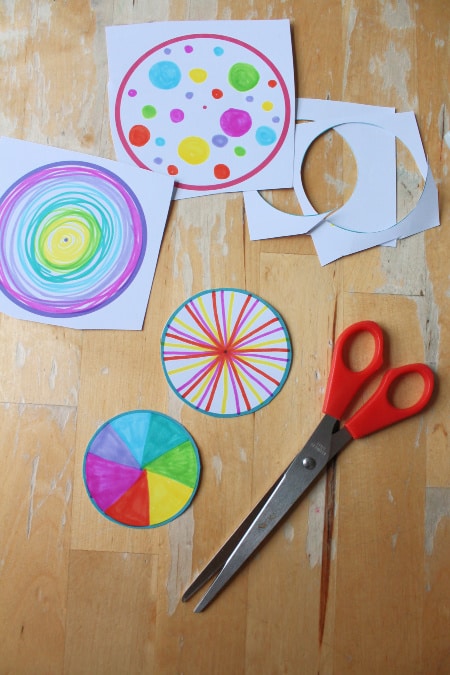
Cut out each spinning top using scissors.
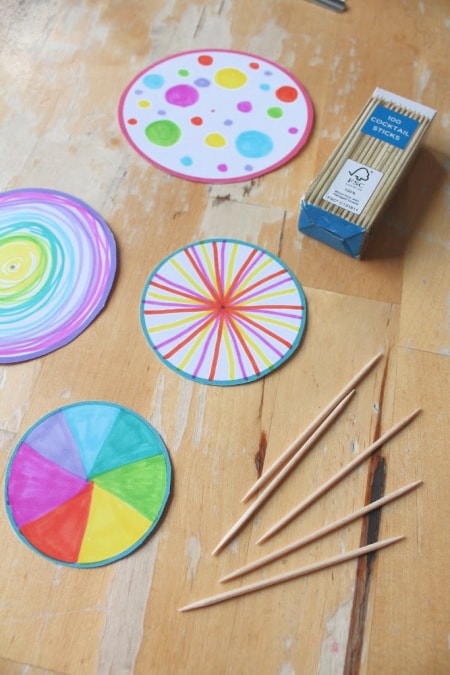
Poke a toothpick into the centre of each spinning top. Take care not to poke yourself or anyone else!
You will notice that each top has a dot printed at its centre to help you.

To make it easier to poke the toothpick through, place a small piece of sticky tack or play dough underneath the spinning top disk.
Poke the toothpick through the card into this sticky tack / play dough.
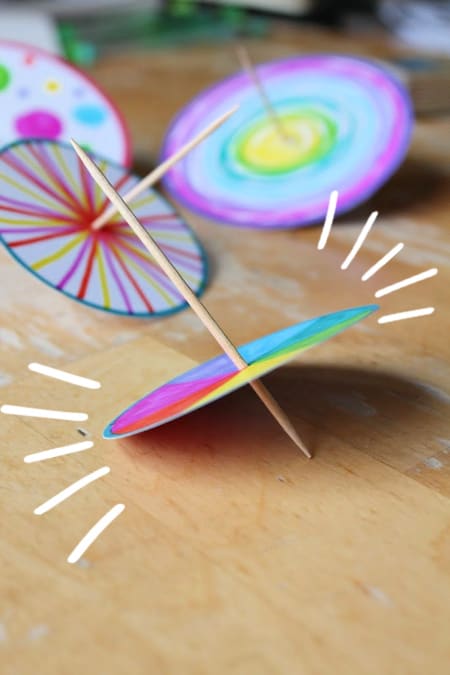
Spinning top experiments
Then give your spinning top a twist and see how it spins.
What do you notice about how the spinning tops work?
Here are some questions you might like to consider:
:: which size spinning top works best?
:: how does your art design look as the top spins?
:: does the way you use your hand to spin the top make a difference to how well it spins?
:: what do you think makes the tops spin and not fall over?
:: what makes them stop spinning?
:: what happens if the top of the tooth pick gets blunt?
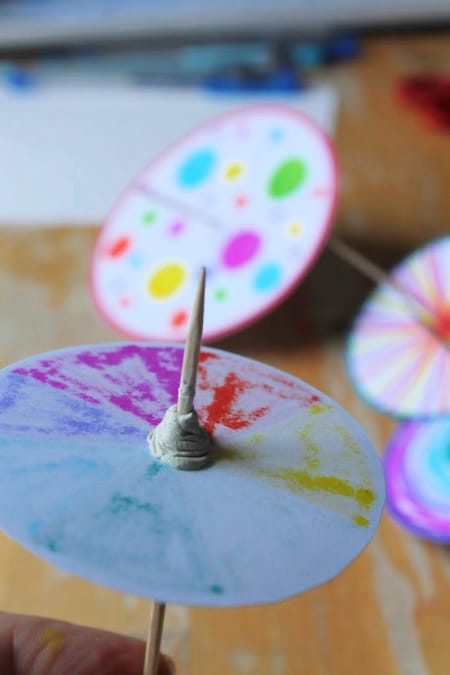
If your spinning top gets a little loose during play, you can add a little sticky tack around the hole to help hold the tooth pick in place.
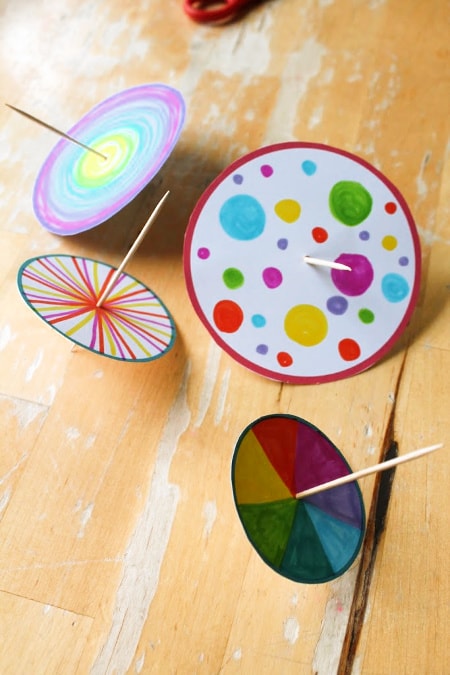
Variations and extensions
Once you have had a play with your spinning tops and considered how they work, you might like to try out these variations and extension activities:
:: time how long the spinning tops spin. Does one spinning top consistently spin longer?
:: test out the spinning tops on of a variety of surfaces: on different textures and different gradients
:: test out spinning tops of different shapes. Instead of circles, make spinning tops out of squares, rectangles, and triangles. Make a prediction about how well they will spin and then test out the different shapes.
:: test out spinning tops of different sizes. Make predictions about whether a bigger or smaller spinning top will work best. Do you think it’s better to place the card near the top or bottom of the tooth pick? Try out the different variations and see if you can explain why the different designs spin differently.
:: use different materials to make spinning tops. How do the spinning tops perform when they are make from paper, thick card, cardboard, polystyrene, wood or even a piece of toast?
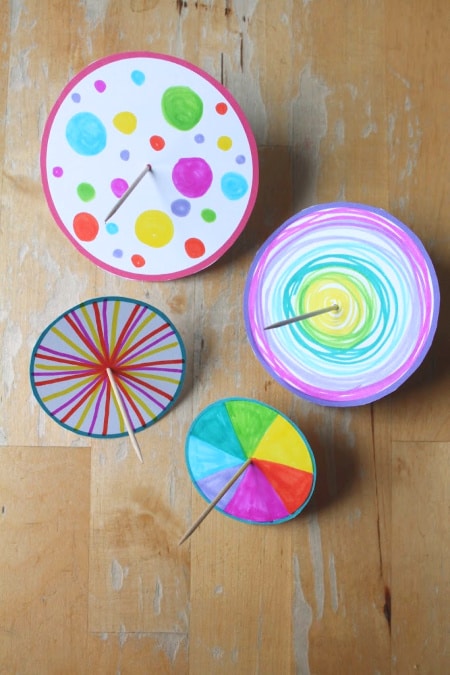
How do spinning tops work?
What’s the science behind spinning tops? What makes a spinning top spin?
The answer is: Forces!
When we use our fingers to set a top spinning, we are giving the top a force that converts its potential (stored) energy into kinetic energy (the energy of motion).
The law of the conservation of angular momentum states that if there are no other influences, something that is spinning will keep on spinning.
When the spinning top is spinning, it’s balancing on the fine point of the tooth pick. This tiny tip minimises the amount of friction generated by its contact with the surface it is spinning on.
With only a tiny amount a friction influencing the spinning top it keeps on spinning for much longer.
After a while, friction does slow the spinning. The spinning top will start to wobble and eventually stop spinning on the axis of the tooth pick and it will fall to one side. This change in orientation is called precession.
When the spinning top beings to tip, the force of gravity exerts a torque on the top. This makes it swing out more. The slower the top spins, the faster it tips. This is why you see it lurch outwards just as friction finally makes the top stop spinning.
Save time and get your ready-made science units!
Yes, you can do all the planning yourself if you want to, or you can head straight to our Play Academy and download our ready-made science unit. That sounds like a better idea!
With our ready-made science units you can teach your children about topics including daffodils, dinosaurs, candy science experiments and space. Each unit is ad-free, clearly laid out and very easy to teach. Plus you’ll get fun printables to make your teaching even more engaging – including the spinning tops printable for this experiment.
Come and join the Play Academy and never have to lesson plan again!



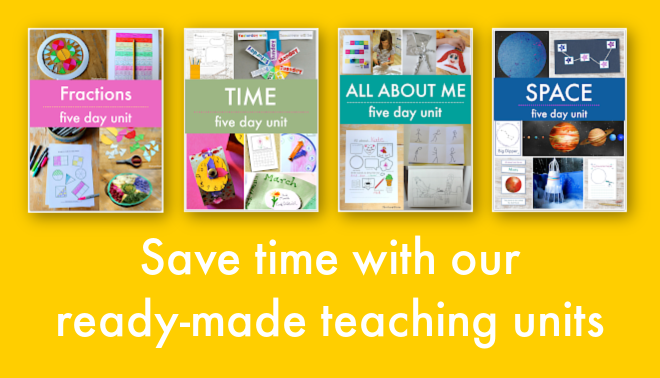
These spinning tops look great. I think the students will enjoy making them then using them.
Thanks Robin. I hope they have fun with them.
nice
Thanks Lina.
I love the spinning tops activity!
Thanks Carly!
Love these!
Can’t wait to try it!
I hope you have fun with it!